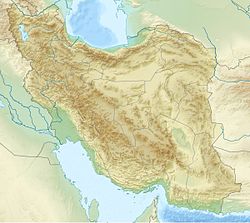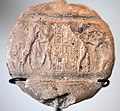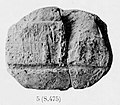Top Qs
Timeline
Chat
Perspective
Awan (ancient city)
Ancient city-state or region of Elam in the western area of modern-day Iran From Wikipedia, the free encyclopedia
Remove ads
Awan (Sumerian cuneiform: 𒀀𒉿𒀭𒆠 a-wa-anki, "Country of Awan") was an ancient city-state or region of Elam in the western area of modern-day Iran. It often appears together with the cities of Susa and Anshan in the early history of Mesopotamia, having many conflictual interactions with Sumer.[1]
Remove ads
Location
Summarize
Perspective
Awan
Possible location of Awan. The approximate Bronze Age extension of the Persian Gulf is shown.
The territory of Awan and related polities in the Mesopotamia area circa 2000 BC.
The city of Awan still has not been located archaeologically. Given the 15th year name of Ibbi-Sin, the fifth and last ruler of the Ur III empire "The year Ibbi-Sîn, king of Ur, roared like a storm against Susa, Adamdun, (and) the land of Awan; made them submit in a single day; and took their lord(s) as bound captive(s)" Awan is thought to be close to Susa and Adamdun (thought to be Andimeshk).[2]
An inscription of Rimush (c. 2279–2270 BC) second ruler of the Akkadian Empire states that he fought a battle "between Awan and Susa" near the "Qablitum River" (Qablitum=Middle).[3]
"<Rimus, king of the world, in battle> was victorious over Abalgamas, king of Parahsum. Zahar, Elam, [G]upin, and [Me]luhha assembled in Pa[rah]sum for battle, but he, (Rimus) captured S[idga'u], general of [Parahsum] (and) [the king(?) of] Elam i[nbetwe]en (the cities of) [Aw]an and [Susa], by the '[Mid]dle Ri[ver]'. [Further], he [h]eaped up over [them] a [burial mo]und i[n] the [are]a of the city. In addition, he tore out the [fo]undation of Parahsum from the land of Elam and (thereby) Rimus, king of the world, rule[d] Elam .... "[4]
Remove ads
History
Summarize
Perspective

A dynasty of Elamite rulers was named after the city, the Awan Dynasty. It was founded by a ruler named Peli, and is therefore sometimes called "the dynasty of Peli".[1] According to the Sumerian King List, Awan put an end to the First Dynasty of Ur circa 2450 BC, and three kings of Awan then ruled over the southern regions of Sumer. Unfortunately, the names of the three rulers are broken off in the text. The primary source of this information is a much later king list, recorded on an Old Babylonian period tablet. The tablet has two lists, twelve rulers of Awan and twelve of Šimaški.[5][6][7] Doubts have been raised about the list, especially the Awan section.[8][9] Only two of the rulers on the Awan list are known with certainty from contemporary records Luh-ishan and Puzur-Inshushinak, and a third Khita has been suggested but is not at all certain.[10]

On a monument recording one of his military campaigns, Sargon of Akkad (c. 2334–2279 BC), first ruler of the Akkadian Empire, lists captives and loot acquired including "booty of Awan".[4] An unknown king of Awan (sometimes speculated to be Khita) is recorded as having signed a peace treaty, in Old Elamite language written in an Old Akkadian ductus, with Naram-Sin (not deified in the text), stating: "The enemy of Naram-Sin is my enemy, the friend of Naram-Sin is my friend".[11][12][13] Old Elamite is poorly understood (all other texts being very short) as yet making interpretation of the text challenging. The text mentions about twenty gods, mostly Elamite but with a few Sumerian and Akkadian, including Inshushinak, Humban, Nahiti, Simut, and Pinikir. It has been suggested that the formal treaty allowed Naram-Sin to have peace on his eastern borders, so that he could deal more effectively with the threat from Gutium.[14][15]
Awan wrestled independence from the Akkadians during the reign of Shar-Kali-Sharri. But some time later, the Awan Dynasty ended with the defeat of its last king, Puzur-Inshushinak by Ur-Nammu (c. 2112–2094 BC), followed by the control of the Third Dynasty of Ur over the region.[1][10]
The last mention of Awan was during the reign of Ibbi-Sin (c. 2028–2004 BC), final ruler of the Ur III Empire, and then only as a geographical area.[16]
Remove ads
List of rulers
Summarize
Perspective
Remove ads
See also
References
Wikiwand - on
Seamless Wikipedia browsing. On steroids.
Remove ads
















